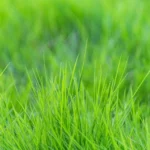
The Ranunculaceae family includes the herbaceous plant buttercup. Buttercups have nearly 2000 species, the majority of which are found in the northern hemisphere. Buttercups are most commonly found in cold and temperate climates. They prefer moist habitats and can be found in fields, meadows, near roads, woodlands, swamps, and bogs. Buttercups are widespread and plentiful in the wild. Some buttercup species are rare and endangered as a result of habitat destruction and the introduction of new, invasive plant species.
Buttercups can grow to be 14 to 16 inches tall.
Buttercups have cup-shaped flowers with five petals. Flowers are typically bright yellow in color. Buttercups come in a variety of colors, including orange, red, and white.
Buttercups have lustrous flowers due to a special layer of reflective cells beneath the surface cells of the petals.
Buttercups are typically in bloom from April to May. During the summer, some species bloom.
Buttercups are easily identified by their gleaming petals. They also have a nectariferous spot, or pool of nectar, on the underside of the petals. This structure attracts insects and facilitates pollination. The nectariferous spot is a unique feature found only in buttercups (it cannot be found in other yellow plants).
Buttercup flowers’ reflexive properties are used in a children’s game to determine fondness for butter. If a yellow reflection appears on the skin after placing a buttercup under the child’s chin, the child enjoys eating butter.
Achene is the fruit of the buttercup. It is classified as a dry and small fruit with a single seed.
Buttercups can be propagated from root and bulb fragments or from seed.
The scientific name for a buttercup, “Ranunculus,” comes from Latin and literally means “little frog.” Buttercups, like small frogs, frequently inhabit areas near water, hence the plant’s name.
Buttercups are poisonous to cattle and humans in all parts. Intoxication symptoms appear immediately after ingesting the plant. They include bloody diarrhea, excessive salivation, colic, and intestine blistering.
People used to believe that the butter’s rich yellow color came from the high content of buttercups in the cows’ diet. This is incorrect because cows avoid buttercups due to their high toxicity.
Some buttercups are extremely toxic, and even simple contact with the plants causes skin irritation and blistering.
During the drying process, all toxic chemicals in the buttercups degrade. Buttercup hay can be fed to cattle as a supplement to their diet.
Despite the fact that compounds isolated from buttercups are toxic to humans, they can be used in medicine to treat rheumatism.
Buttercups can grow as annuals (plants that complete their life cycle in one year) or biennials (plants that complete their life cycle in two years) (plants that complete their life cycle in two years).









